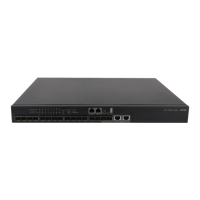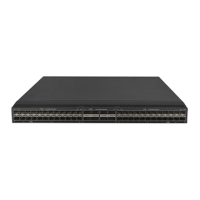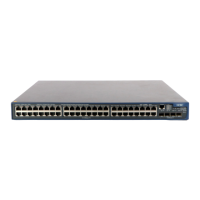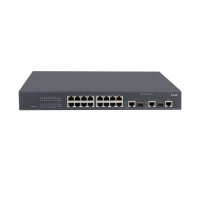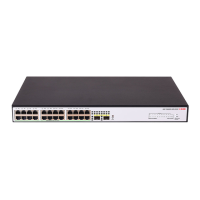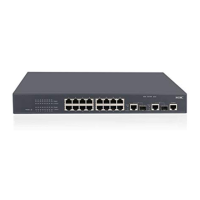29
a. Use the display transceiver diagnosis interface command to view the present
measured values of the digital diagnosis parameters for the transceiver module.
<Sysname> display transceiver diagnosis interface ten-gigabitethernet 1/0/1
Ten-GigabitEthernet1/0/1 transceiver diagnostic information:
Current diagnostic parameters:
[module] Temp.(°C)
1stTX 2ndTX 1stRX 2ndRX
N/A N/A N/A N/A
Voltage(V)
3.3VTX 12VTX 3.3VRX 12VRX
3.29 N/A 3.40 N/A
[channel] TX Bias(mA) RX power(dBm) TX power(dBm)
1 6.09 0.91 -0.77
2 5.95 1.09 -0.16
3 6.05 1.58 -0.17
4 5.85 1.58 -0.14
5 6.07 2.23 -0.30
6 5.72 2.85 -0.47
7 6.11 3.01 -0.08
8 5.50 1.17 -0.02
Alarm thresholds:
[module] Temp.(°C) Voltage(V) Bias(mA) RX power(dBM) TX power(dBM)
High 0 3.63 10.00 1.58 5.44
Low 0 2.97 0.50 3.13 -11.61
b. If the optical power of the transceiver module is not within the correct range, replace the
transceiver module with a transceiver module of the same model that is operating correctly.
3. Verify that the port configurations are correct:
a. Execute the display interface brief command.
b. Determine whether the speed and duplex mode of the port match the speed and duplex
mode of the peer port.
c. If they do not match, use the speed command and the duplex command to set the speed
and duplex mode for the port.
4. Verify that the port and the link medium are operating correctly:
a. Plug the link medium into another port that is operating correctly, and determine whether the
same issue occurs.
b. If the issue still occurs, verify that the following items are operating correctly:
− Intermediate links and devices, including optical-to-electrical converters, cable terminal
racks, and transmission devices.
− Transmission medium, including network cables, optical fibers, and transceiver
modules.
c. Examine the port:
− If the port is a copper port, directly connect the port to a PC.
− If the port is a fiber port, replace the transceiver module plugged into the port.
5. Determine whether the port has received a large amount of flow control frames:
a. Use the display interface command to view the number of pause frames.
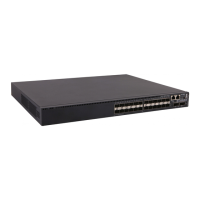
